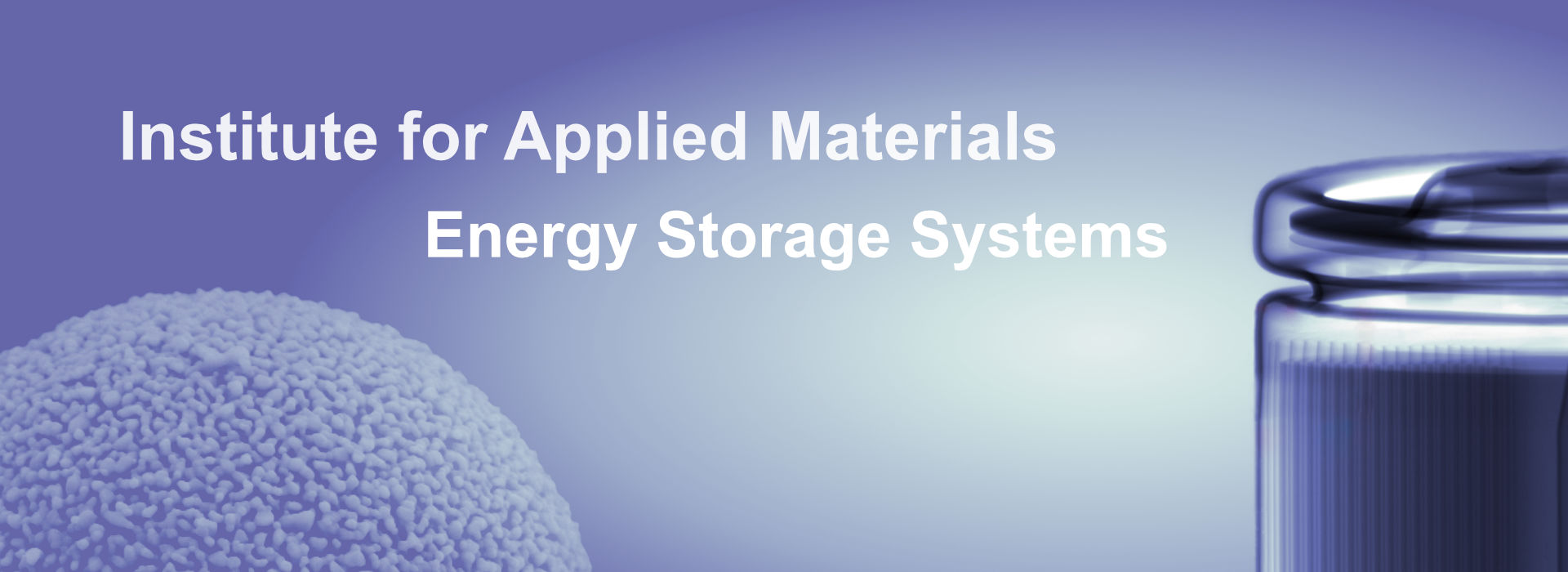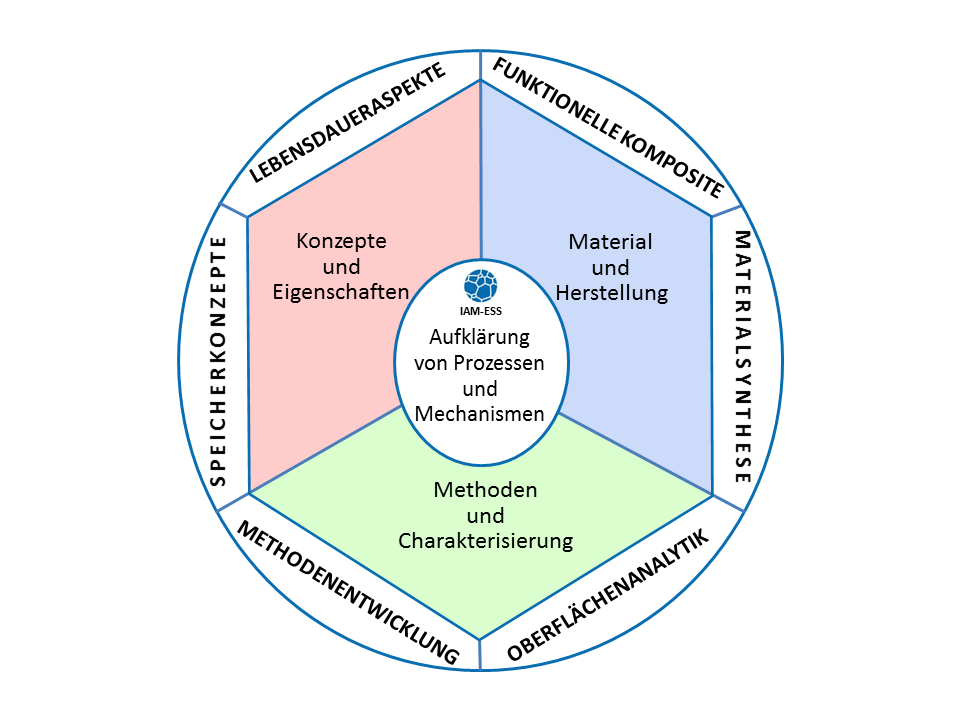The IAM-ESS
The Institute for Applied Materials - Energy Storage Systems at KIT deals with the production of novel materials for energy storage, such as for Li-ion batteries and post-lithium systems, as well as the research in the processes involved in energy storage, the manufacture and testing of electrodes and cells.
The institute is also part of the Institute for Inorganic Chemistry: Materials Research for Novel Energy Storage Systems (AK Ehrenberg).
In addition to the laboratory equipment required for research, the institute also has access to large scale research facilities such as neutron and synchrotron radiation sources. In cooperation with these facilities, the institute develops in-situ and in-operando techniques to investigate specific aspects in materials as well as complete, commercial devices.
To increase the efficiency of energy storage systems for applications in wind and solar energy or in the field of electromobility a long service life of storage systems is required. It is, therefore, important to study mechanisms of aging and degradation in order to develop lifespan models as accurate as possible. The investigations are carried out both, in-situ and post-mortem. Starting with the material analysis to setting up of models, the institute cooperates with partners from industry and other research institutes. Further points of interest of the institute are the development of new materials and storage systems, the investigation of so-called redox flow storage devices and the development of methods for the efficient investigation of entire components under in-operando conditions. The manufacture of electrodes and cells are also a part of research, as well as material development for fusion research.
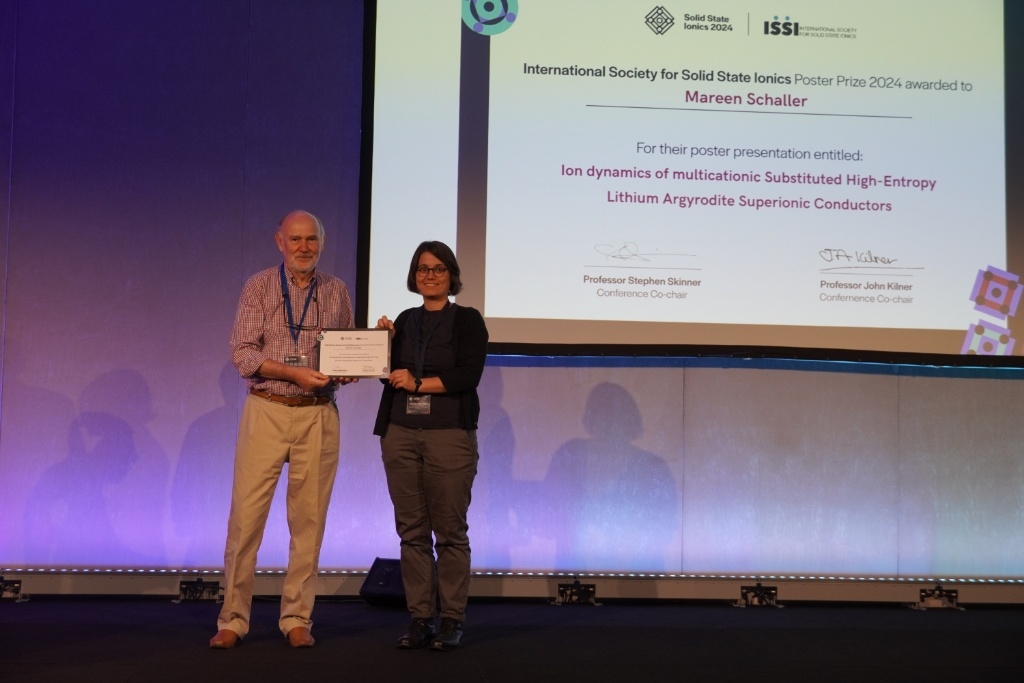
Solid State Ionics conference in London (July 15-19, 2024):
Prof. John Kilner (President of the Solid State Ionics Society) gives the poster award certificate to Dr. Mareen Schaller for her poster “Ion dynamics of multicationic substituted High-Entropy Argyrodite Superionic Conductors”.
Link zur Konferenz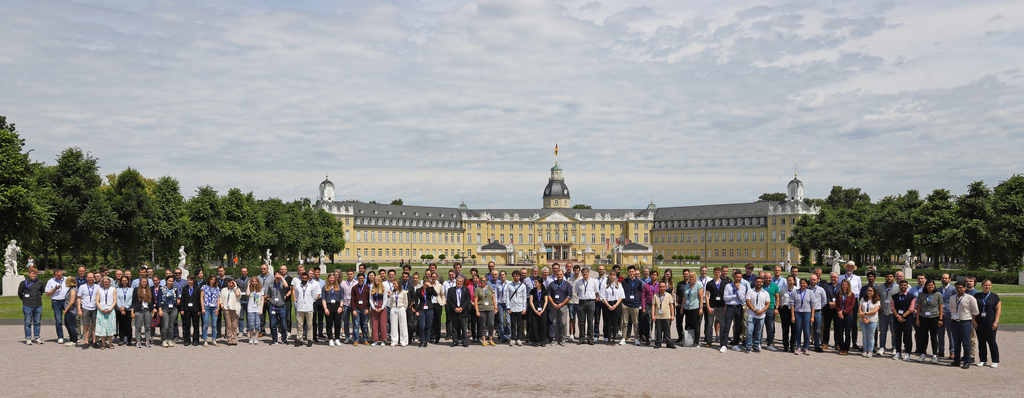
This year's Retreat of the Cluster of Excellence POLiS took place from June 18 to 19, 2024 in the heart of Karlsruhe. Around 130 excellent young scientists from the Karlsruher Instituts für Technologie, the Universität Ulm and Justus Liebig Universität Gießen as well as guest scientists from all over the world came together with established professors to discuss the latest research trends in battery research. Participants from our institute, IAM-ESS, included Prof. Ehrenberg, Dr. Fabian Jeschull, Dr. Werner Bauer, Dr. Anna Smith and of course several researcher and phD students. The program included a total of 6 keynote lectures and 21 regular lectures. More than 50 POLiS members presented their research results in three poster sessions.
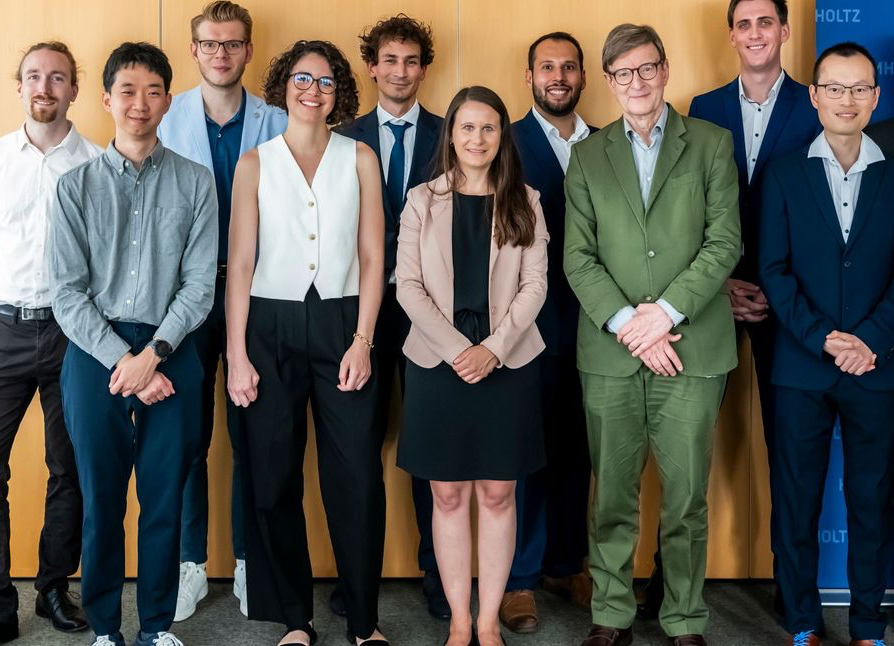
Helmholtz doctoral award for staff of the IAM-ESS
Dr. Hannes Radinger was awarded the Helmholtz PhD Prize for his work on carbon-based electrodes for redox flow batteries. Mr. Radinger carried out his work at IAM-ESS in the group 'Carbon based materials for electrochemical energy storage'.
More_rdax_98.jpeg)
Platz 3 beim Neuland Innovationspreis
Der "Neuland" Innovationswettbewerb zeichnet jährlich am KIT entwickelte innovative Technologien und Verfahren aus und hat das Ziel, deren Markteinführung in Kooperationen mit Industriepartnern zu fördern.
Den 3. Platz unter 21 eingereichten Ideen gewannen dieses Jahr Forschende des IAM für die Verbesserung dotierter LiNi0.5Mn1.5O4 (LNMO) Hochvoltspinelle als Kathodenmaterial für die nächste Generation von Li-Ionen Batterien.
More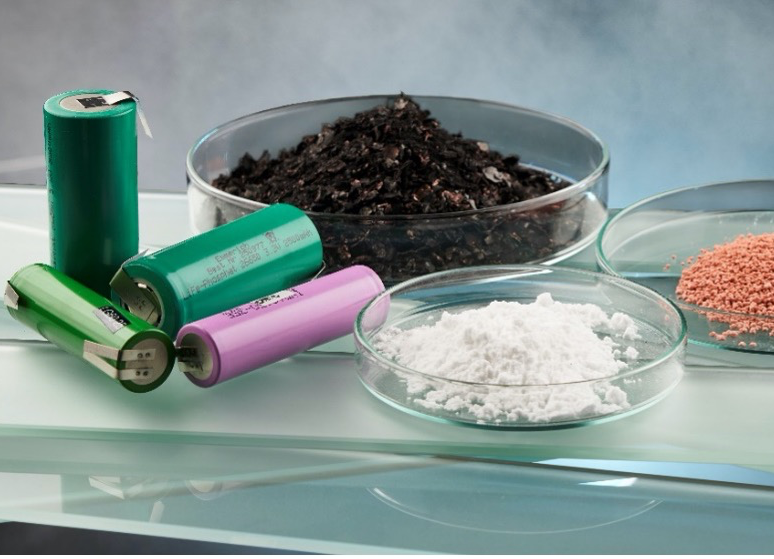
From the cradle to the grave
Activities in Li-Ion battery (LIB) recycling have become more and more prominent at IAM-ESS. Since not only has the quest for better batteries moved into the focus of research, economic and ecologic production must also be considered. Recycling of used battery cells or scrap material from production will present an enormous future challenge and a promising source of raw materials. IAM-ESS is jumping on the train with several coordinated activities.
More-02-23-licorne-20230131-AB-03-005_r_rdax_98.jpeg)
Gewinnung von Lithium aus europäischen Quellen
Lithium aus europäischen Quellen soll die Rohstoffabhängigkeit durch nachhaltige, energieeffiziente und umweltfreundliche Produktionsketten reduzieren.
Der neue EU-Rechtsrahmen für Batterien geht davon aus, dass sich der Lithium-Bedarf bis 2030 um das 18-fache und bis 2050 sogar um das 60-fache erhöht. Im Projekt LiCORNE („Lithium Recovery and Battery Grade Materials Production from European Resources”), an dem auch das KIT beteiligt ist, wollen Partner aus Forschung und Industrie Lithium aus europäischen Quellen wie Thermalwässern, mineralischen Vorkommen oder Altbatterien gewinnen, um die Rohstoffabhängigkeit zu verringern. Außerdem werden kosteneffiziente, sichere und flexible Technologien zur Gewinnung entwickelt, die eine höhere Ausbeute bei geringem ökologischem Fußabdruck ermöglichen.
More
Data-driven capacity estimation of commercial lithium-ion batteries from voltage relaxation
(Article was selected as one of Editors' Highlights in section Energy: https://www.nature.com/collections/dmmhtcypsc)Accurate capacity estimation is crucial for the reliable and safe operation of lithium-ion Batteries. Researchers from Tongji University and KIT in cooperation with other institutes have investigated the possibility to use relaxation voltage curves of commercial cells to estimate the capacity. This way no additional cycling information and no complete charge/discharge cycle is required to determine the residual capacity. Statistical features derived from relaxation curves were compared with three different models and then used to estimate residual capacity of the cells.
More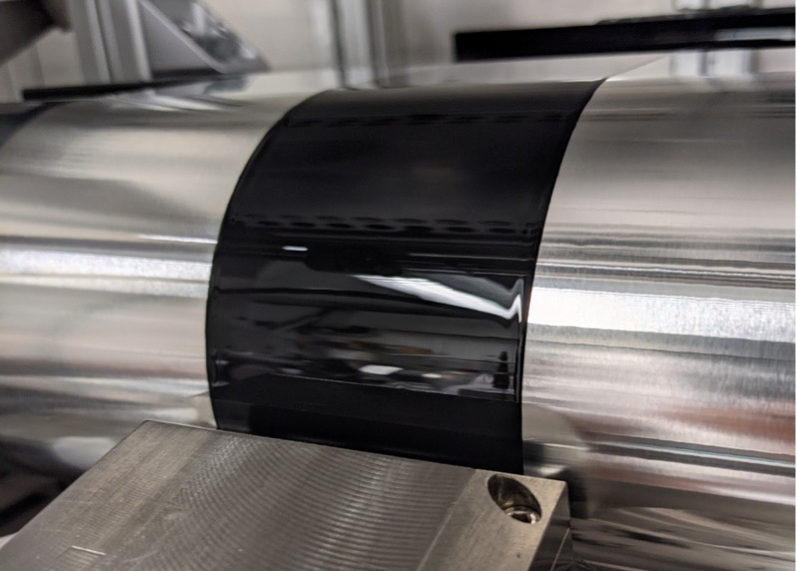
MEFBatt: Pilotanlage zur Massenproduktion von Elektroden für Festkörperbatterien am KIT
Im BMBF geförderten Forschungsprojekt MEFBatt („Aufrüstung einer Mehrlagen-Elektrodenfertigung zur Prozessierung von Festkörper-Batterien im Pilotmaßstab“) wird am IAM-ESS des KIT der nächste Schritt zur Massenproduktion ermöglicht. Mit einer Pilotanlage soll der Fertigungsprozess von Elektroden für Festkörperbatterien zur Vorbereitung einer industriellen Massenproduktion erforscht und optimiert werden.
Open article